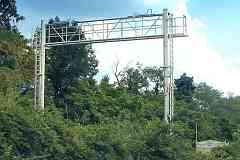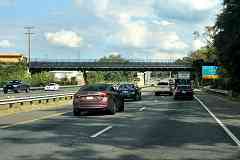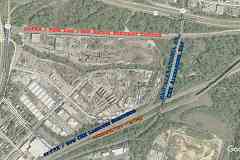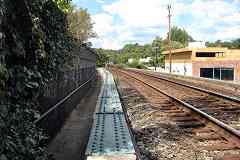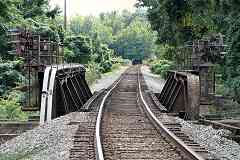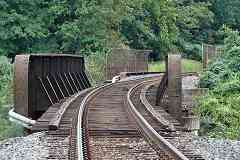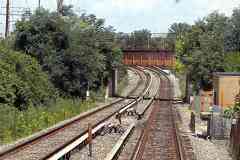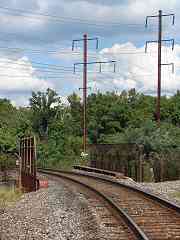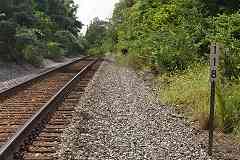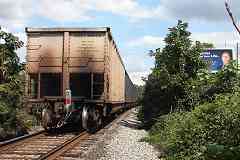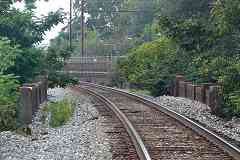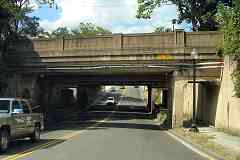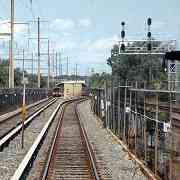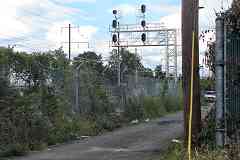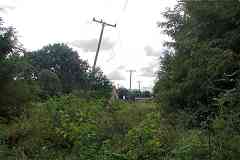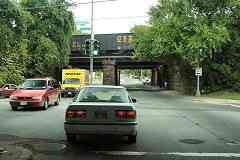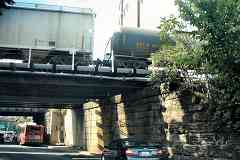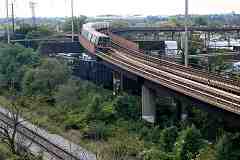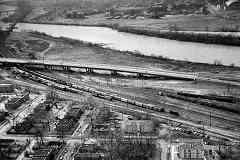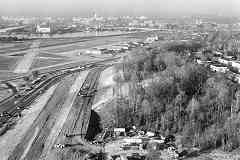|
The Alexandria Branch is off photo-right. Utility poles still follow the
route of the Chesapeake Beach Railway (CB) which itself followed the route
of the Southern Maryland Railroad, a company that went under before operating
any trains. Of the various rail companies that followed, the CB was perhaps
the most successful. From 1900 to 1935 the CB carried passengers to a resort
at Chesapeake Beach, Maryland.
Herb Harwood wrote about what followed the CB:
The 27-mile-long Chesapeake Beach Ry. was completed in 1900 between Chesapeake
Jct. and a newly established resort on Chesapeake Bay named Chesapeake Beach.
Designed primarily to carry passengers between Washington and the resort, the
CB generated only a modest amount of general freight interchange. But the
junction became important to B&O as its method of serving what later became the
Potomac Electric Power Co.'s Benning power plant, a large coal consumer. The
plant was directly served by the PRR, but B&O coal shipments reached it through
an unusual route that required intermediate handling by the CB and the Washington
Ry. & Electric Co. (later Capital Transit Co.). Coal was interchanged with the CB,
which carried it no more than a long block to connect with the WR&E/CTCo.'s Seat
Pleasant streetcar line at Deane Ave. From there, electric trolley locomotives
took the cars a short distance south on Kenilworth Ave. (now Kenilworth Ave. Freeway)
to the plant.
The CB expired in 1935, but about 2 miles at its western end were retained and
reorganized as the East Washington Ry. Although it served a few freight customers
in the Seat Pleasant area, the EW's main livelihood came from its role as the
ultra-short switching link for B&O power plant coal between Chesapeake Jct. and
the streetcar line at Deane Ave. Capital Transit abandoned the car line in 1949,
but continued hauling B&O coal between the EW Deane Ave. interchange and the
Benning plant. The full operation was turned over to the EW in 1955 and survived
until 1978, when the plant switched to oil, the EW was abandoned, and the
Chesapeake Jct. interchange ceased to exist.
Links:
Chesapeake Beach Railway at Wikipedia,
Chesapeake Beach Railway Museum,
CB at Abandoned Rails
|
